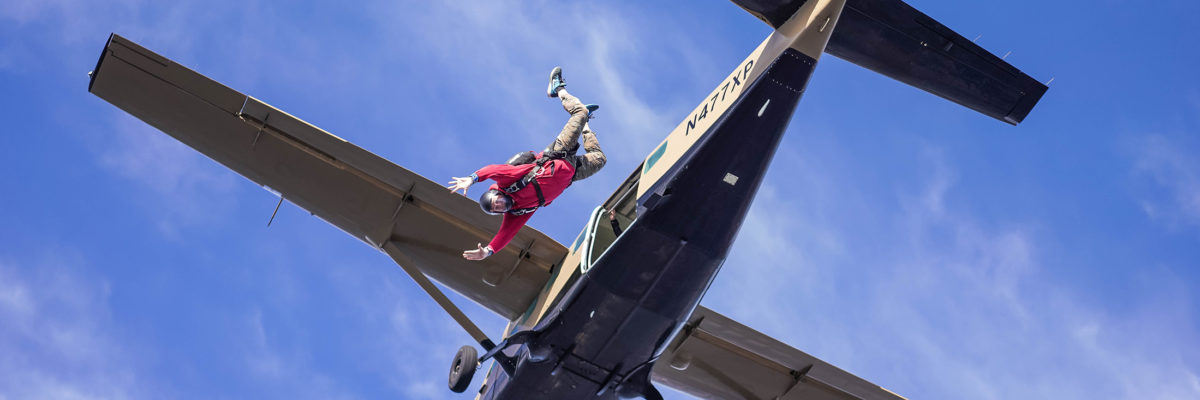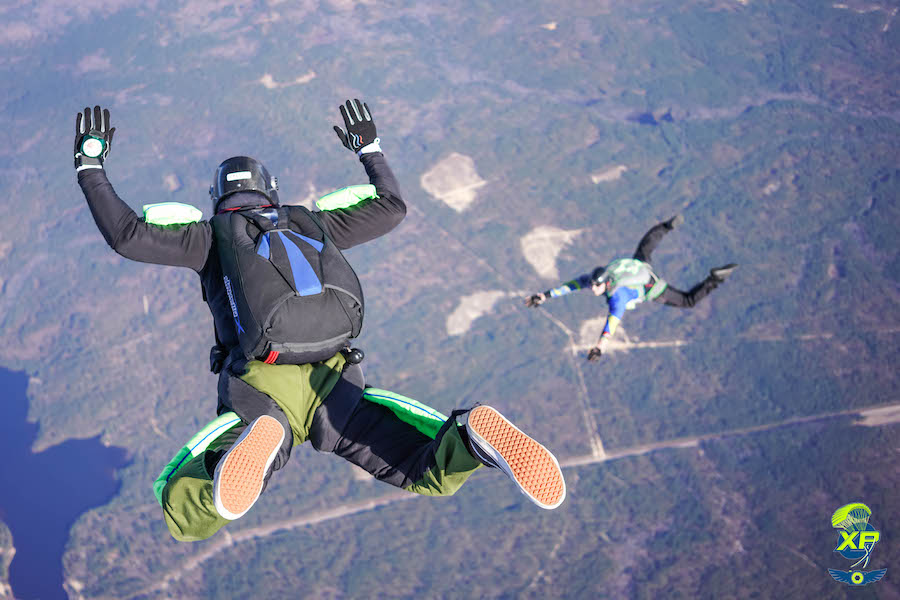
The proper body position for exiting the aircraft and freefall (And Why It Matters)
Thursday, May 30, 2019
- Team FlyXP
- 5/30/19
- 0
- General, Skydiving, Skydiving Training
Every skydiver — whether this is her first jump or her fourteen-thousandth — will meet precisely the same thing on the other side of the open aircraft door: Relative wind. It’s the same stuff you “fly” your hand in when you stick it out the car window: the wind you make yourself by moving quickly. It’s relative wind that we use to exit, and it’s relative wind that keeps us stably sliding down into terminal velocity when we’re doing it right.
Why Does A Good Skydiving Exit Matter?
Here’s one of the world’s best skydiving tips for beginners and beyond: You’re going to want to exit strong. A stable exit is one of the first skills you’ll need to learn when you’re cranking through your skydiving course, and one of the most important aspects of the jump to dial in as you progress through your early skydiving career. A weak aircraft exit eats up valuable freefall time and puts you behind the game for your entire skydive. If you dial in a good, stable exit, on the other hand, you can get down to brass tacks with your freefall tasks sooner, smoother and more confidently.

What’s A Great Neutral Body Position?
The most stable, neutral body position on the wind is also the most comfortable: a relaxed, easygoing arch. This allows you to rest on the relative wind in a more-or-less aerodynamic way, with your hips are pushed forward into the wind, your arms and legs spread out evenly and pulled back and your chin up. This body position for skydiving creates a smooth, wind-friendly curve all the way from head to toe. In this position you will naturally face into the wind.
Your task, should you choose to accept it, is simply to present your belly button — the lowest part of your arch — to the relative wind as you exit the aircraft. Since you’ll be gently tipping out of an airplane flying at about 100 MPH, that relative wind will be coming at you from the front of the airplane, so that’s the general direction in which to aim. You’ll get the intuitive timing with a few tries, so don’t worry too much about it; from there, a great exit is a simple matter of opening your hands, pivoting into the wind, relaxing and ta-dah! You’re flyin’.
What’s Next?
As you progress in your parachute training and your body starts to vibe with it, you’ll learn different kinds of exits. These are generally for the purpose of jumping with others. For example: we have the floater exit (exit outside the aircraft with intention of leaving before the group and floating up to the formation or person) and the diver exit (exit from inside the aircraft with intentions of diving down to the intended formation or person) and a whole flurry of different kinds of linked exits (exiting the plane holding on to other jumpers in some configuration or other). You can do gainers, flips, barrel rolls… Honestly, there are nearly as many ways to get out of a plane as there are are crazy-beautiful ideas — so let’s get you your solo parachuting license and let’s see some of yours, okay? We’re looking so forward to it.
If you are interested in learning more about how to exit the plane properly, or want to talk with us about scheduling your first, or next jump, contact us today and we’d be happy to discuss your options with you.
Copyright © 2024, Skydive Paraclete XP, All Rights Reserved.
DropZone Web Design & Marketing by Beyond Marketing, LLC
